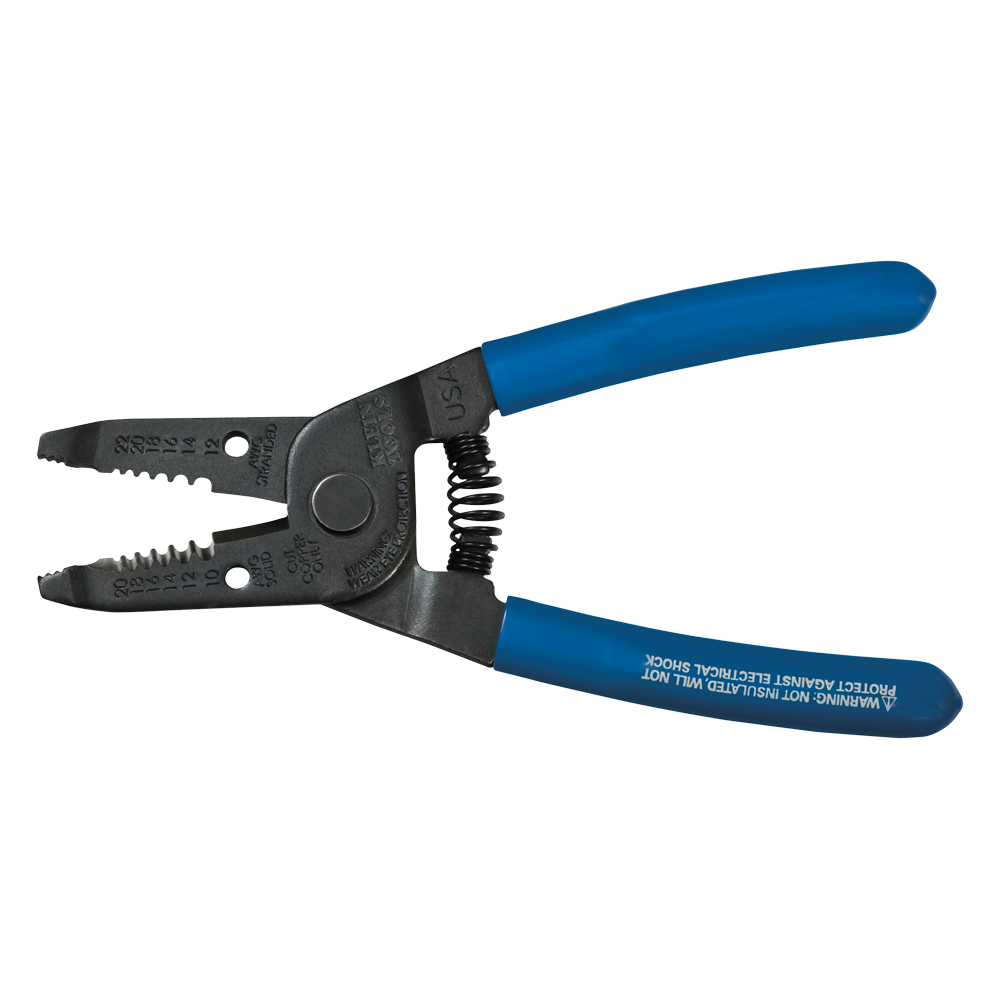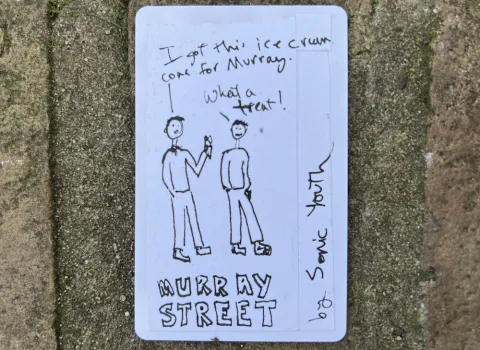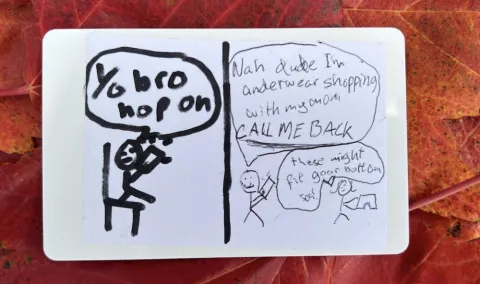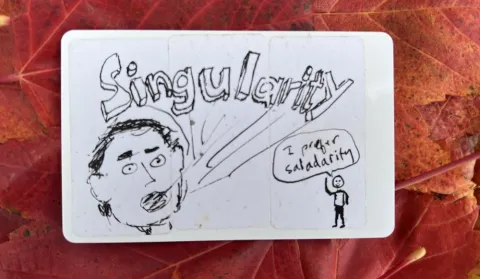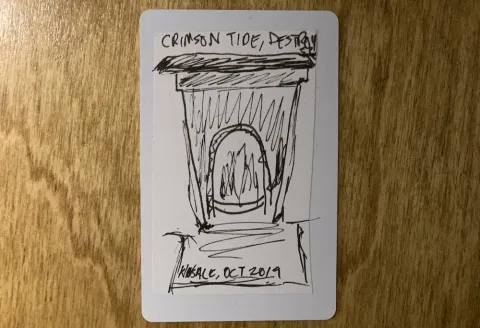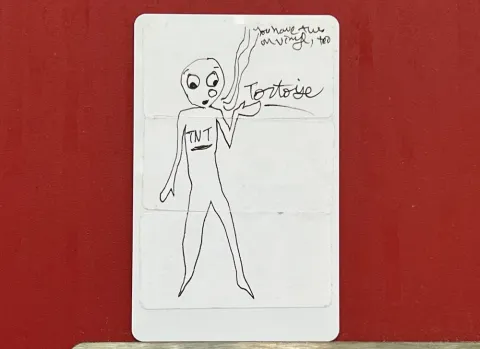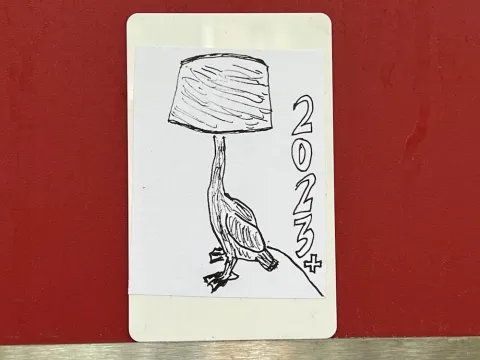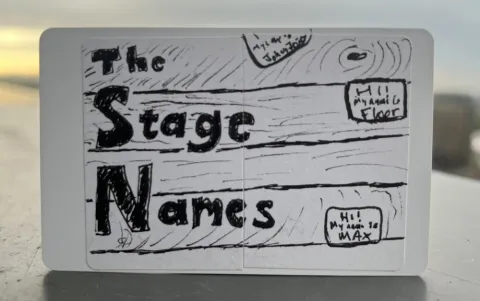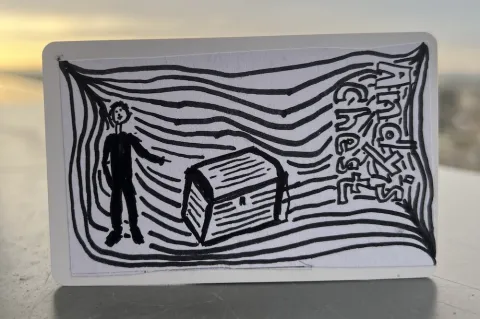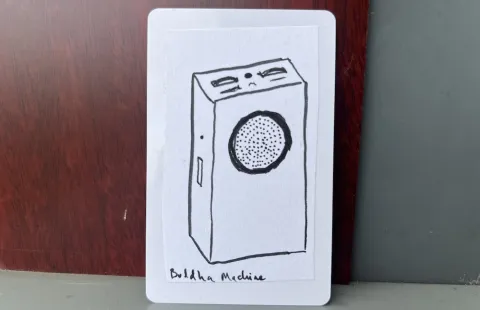In 2017, my son and I started creating these cards, drawing art for then-new albums that we were listening to. My son's and wife's favourite at the time was The Getaway; I was listening to Wolf Parade.
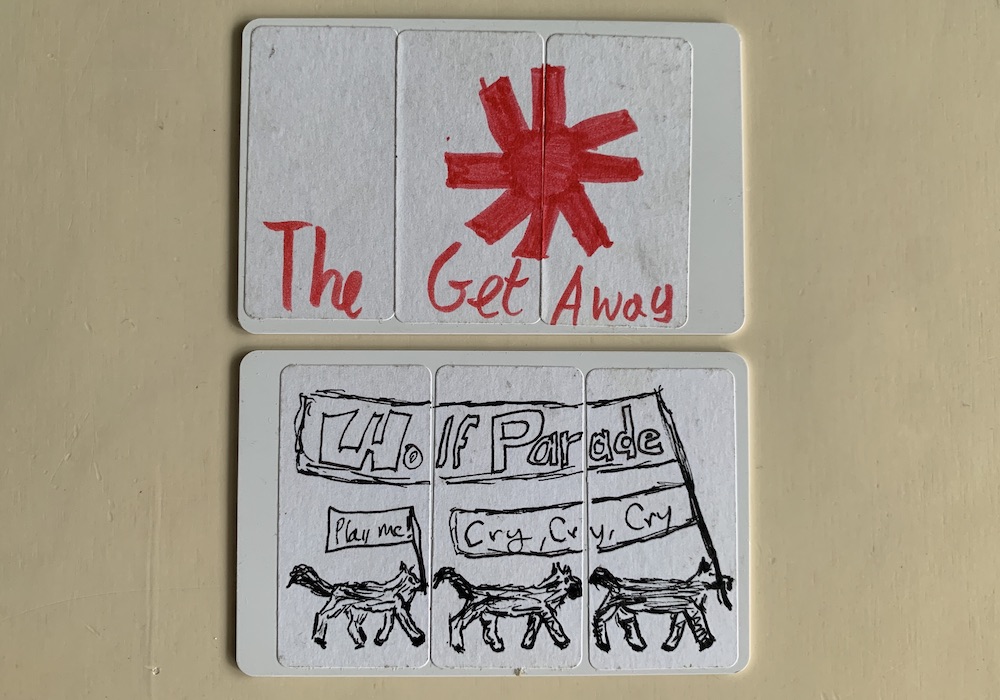
Over the years, we've made hundreds of these cards, each one drawn on a blank card about the size of a credit card. Specifically, it's the same type of card you might use to tap to open a hotel room door or an access gate at work. A blank music card looks like this:
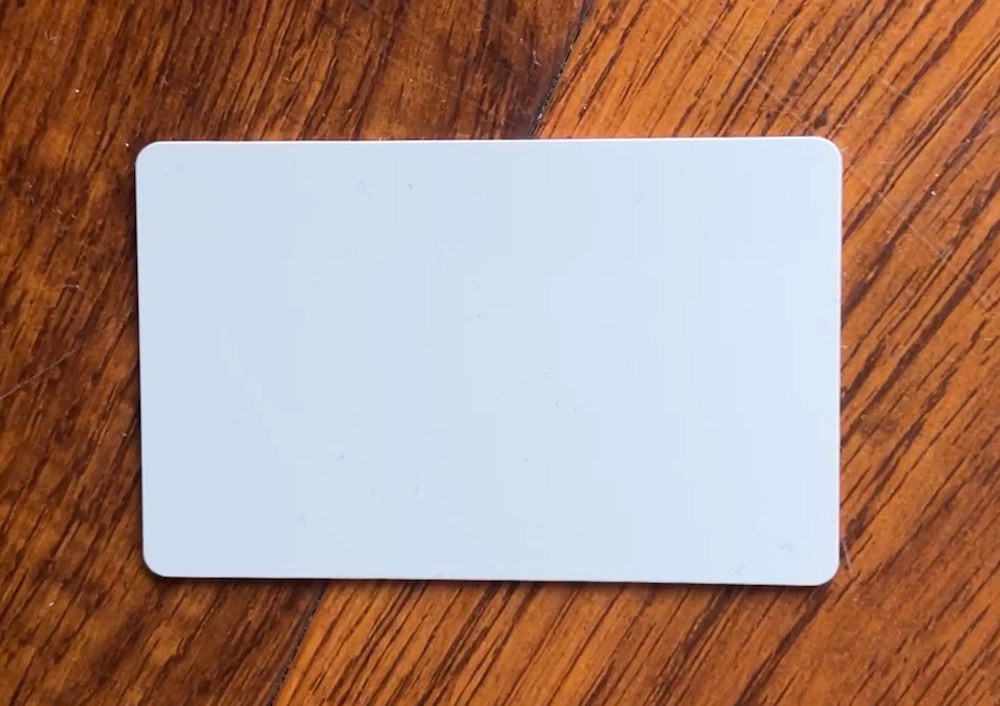
...then we add a sticker and draw, usually in black ink, a scene inspired by an album, song or playlist. There are numerous examples on the list of all music cards, but for example:
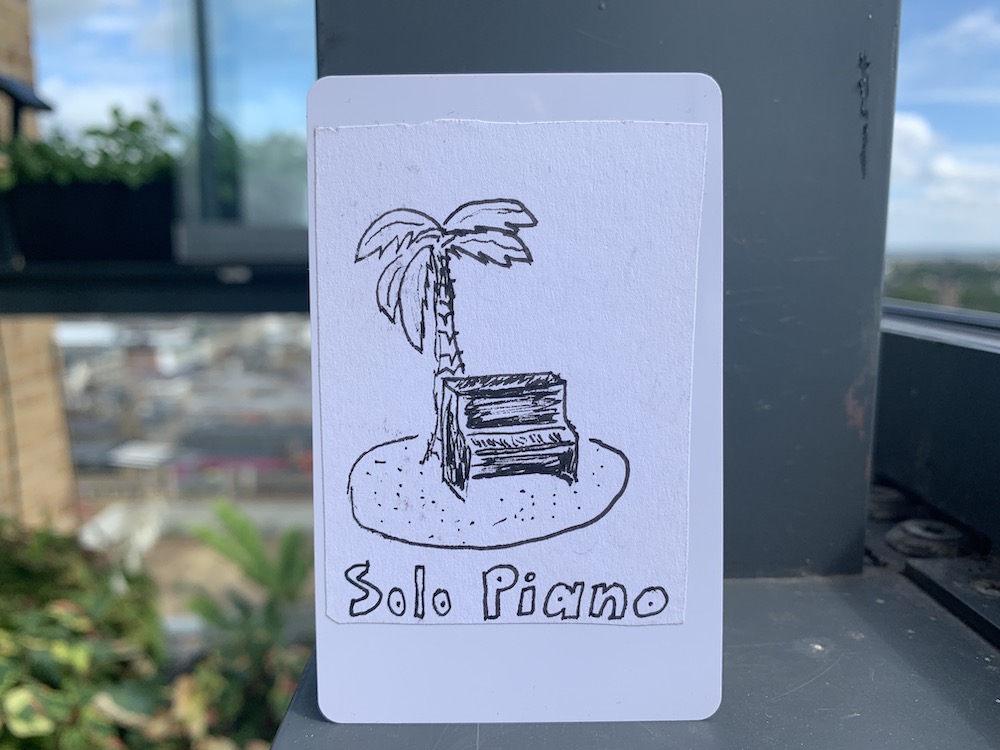
We happened upon this format serendipitously. I'd gotten a Raspberry Pi not long before, and found a project that, with the addition of a basic RFID card reader, enabled specified music to be played when a music card was "tapped" to the card-reader.
It was a really great system, and enabled my family and I to play music very simply, we just set up the card reader in our kitchen, tapped a card for an album to the card reader, and the album or song played.
Eventually we put the Raspberry Pi, a small speaker and the card reader in a small box, which made for a tidy music player. My son used one for years at his desk in his room. It accompanied him through bottle-flipping -- there's a large collection of our music that I still associate with the repeated 'thunk' of bottle-flipping -- and beyond. There's some that reminds me of him learning the Rubik's Cube plus numerous albums that have soundtracked our lives since then.
I still have a music box in our kitchen, which I use to play more recent songs, albums, playlists and podcasts on Spotify.
Technical details
This project began with us drawing on blank RFID cards (more information about RFID cards). Each card contains an embedded tiny chip and compact loop of wires. When the card is tapped to a card reader connected to a computer, the wires act as a way to receive enough power to activate the card's tiny chip, which emits a string of 10 characters that the computer receives.
That value is read, it's looked up in a file that pairs the chip to a number that corresponds to a Spotify playlist or album, and we use that to connect to Spotify and ask it to play a song, album, playlist or podcast.
Required equipment
Requirements in order to build the music cards reader and a series of music cards:
- Card reader
- Raspberry Pi, ideally a Raspberry Pi 3 at minimum
- Spotify Premium subscription (the API connections don't work with free accounts)
- Speakers of some sort, either connected to your Raspberry Pi or a connected set of speakers on your network
- Code that is a sort of service, continually 'listening' for an RFID card to be tapped to a card reader, and the ability to match the card's 10-digit value to a file that contains the details necessary to identify the album, track, podcast etc in Spotify. [Update September 2024: Spotify changed its API; I need to refactor my code, then will share.]
For the music cards:
- RFID cards
- Label stickers of some sort - this is necessary because the RFID cards we've gotten are just plain plastic, which doesn't absorb ink
- Pens - I use ballpoint black or a small felt tip pen, mostly
- Minimal drawing skills
- Ideas for album art
- Appreciation of silly jokes (optional)
